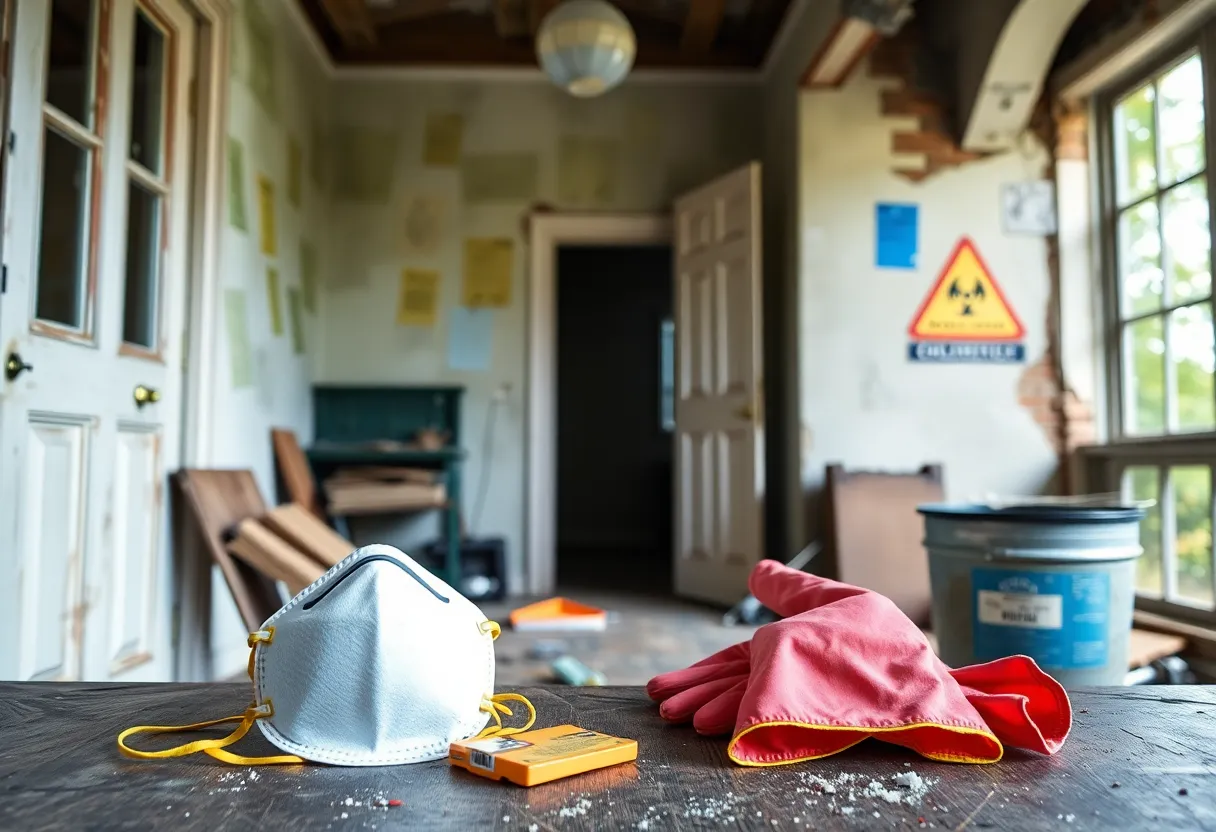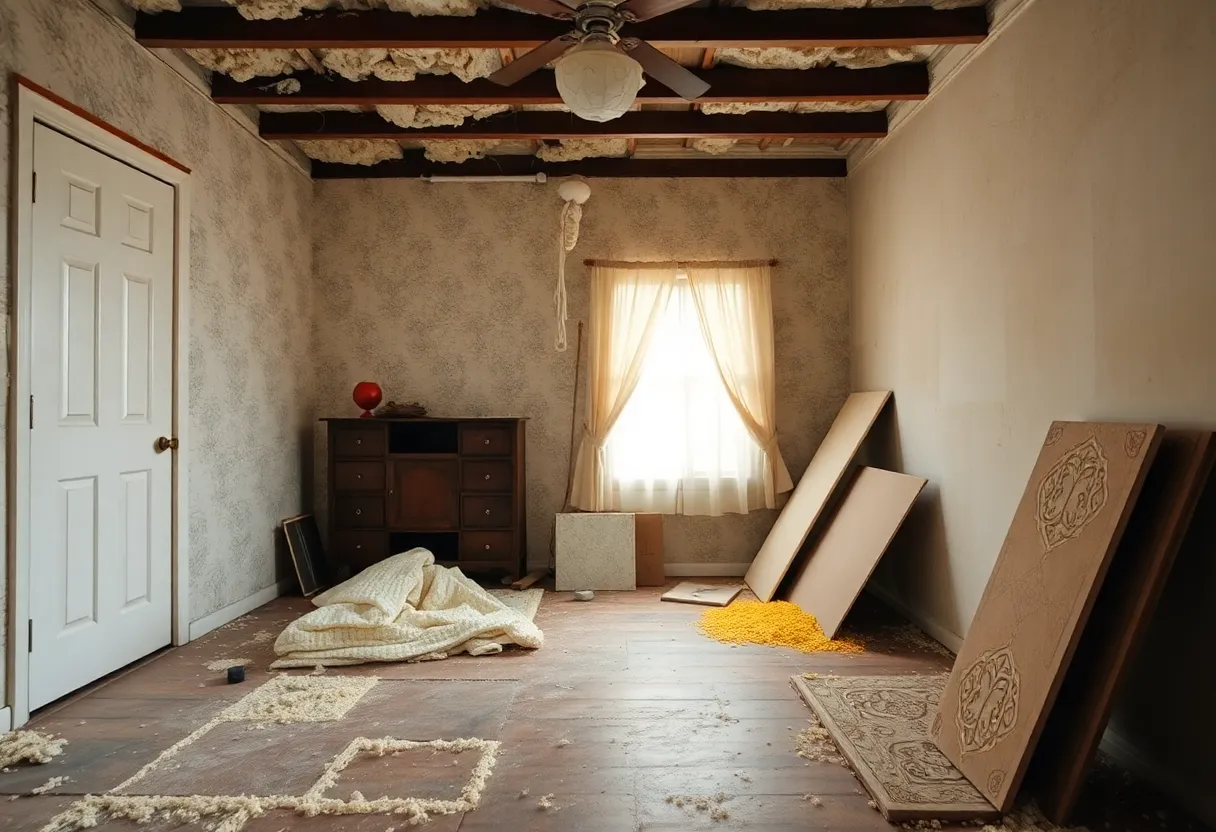News Summary
A homeowner in Ottawa, Illinois, faced a crisis after a botched asbestos removal from his century-old home. Despite spending $20,000, inspections revealed hazardous materials were still present. A second contractor confirmed additional asbestos, costing Flores an extra $8,000. The unsafe removal raised serious concerns about licensing and safety regulations. Flores has since initiated a lawsuit against the contractor, illuminating the urgent need for better asbestos removal regulations to protect homeowners from health risks.
Asbestos Nightmare: Homeowner Battles for Safety After Costly Cleanup
In a shocking turn of events, a homeowner in Ottawa, Illinois, faced a perilous health crisis after a botched asbestos removal at his newly acquired century-old home. This property, once intended to be a vacation rental near the popular Starved Rock State Park, became a nightmare after the presence of hazardous materials was uncovered in its attic.
Potential Health Risks Revealed
Michael Flores, the unfortunate homeowner, spent a staggering $20,000 to clean his attic, which was filled with vermiculite insulation—a material notorious for containing asbestos fibers that pose serious health risks. After hiring a contractor for the removal, Flores was led to believe that the attic was now safe, but subsequent inspections told a different story.
Upon discovering leftover hazardous insulation, Flores reached out to the contractor, who declared the job complete. In a desperate attempt for safety, Flores sent photographic evidence of the remaining hazardous materials, but the contractor stood by their previous claims of successful cleanup, ignoring the serious risks posed to Flores and his impending guests.
Further Complications and Additional Costs
Realizing he was still in danger, Flores hired a second contractor for a thorough inspection and was horrified to learn that the attic still contained asbestos, rendering it unsafe for habitation. This additional cleanup cost him an extra $8,000, bringing the total expense of asbestos removal to a staggering $28,000.
The situation took another troubling turn when it was revealed that security footage of the initial asbestos removal showed workers from Clean Air Asbestos and Mold Control LLC operating without proper protective gear, blatantly violating safety protocols essential for handling hazardous materials. What’s worse, the vacuum used during the removal wasn’t even fit for asbestos work—it was merely a standard insulation vacuum, as verified by the manufacturer.
Escalating the Issue
Flores didn’t sit idly by after uncovering these violations. He escalated the matter to the Illinois Department of Public Health (IDPH), equipped with crucial evidence that included security footage and documentation confirming the inadequacy of the equipment used. Internal emails from the IDPH showed that employees acknowledged concerns about Clean Air Asbestos fabricating their claims about their cleaning efficiency.
In a shocking revelation, the regulations in Illinois stipulate that only public buildings, commercial properties, and multi-unit residences require asbestos abatement licenses—leaving single-family homes vulnerable to unlicensed contractors offering their services. This loophole has alarmed occupational health experts who note that homeowners across the state may unknowingly put their health at risk.
Call for Change in Asbestos Removal Regulations
The pressing concerns surrounding unregulated asbestos removal have drawn attention to the fact that, according to a comprehensive study, only a mere seven states mandatorily require licenses for asbestos removal in private homes. As health experts point out, this significant gap in regulation could potentially jeopardize the well-being of countless families.
Dr. Arthur Frank, a prominent figure in occupational health, emphasizes the importance of hiring certified professionals who possess the necessary licenses and certifications from the Environmental Protection Agency (EPA) and the Occupational Safety and Health Administration (OSHA). Prospective homeowners are strongly advised to ask for detailed abatement processes, which should include initial inspections, protocols for sealing off areas, minimizing airborne particles, rigorous clearance testing, and proper disposal of hazardous materials.
Resources for Concerned Homeowners
When considering hiring a contractor for asbestos removal, homeowners should check for reviews on platforms like the Better Business Bureau, and seek out recent references from previous clients. Proper research can mean the difference between safety and danger in situations involving hazardous materials like asbestos.
As for Flores, he has initiated a lawsuit against Clean Air Asbestos and Mold Control LLC, which has denied all allegations of wrongdoing. His harrowing experience serves as a cautionary tale for others navigating the perilous realm of asbestos removal.
Understanding the Risks
The World Health Organization highlights that over 200,000 deaths occur globally each year due to asbestos-related diseases, with the United States accounting for approximately 12,000 to 15,000 deaths annually. These figures underscore the critical need for rigorous safety standards in asbestos handling and removal to protect the health of citizens.
Flores’s plight shines a light on the urgent need for improved regulations and enforcement surrounding asbestos removal—something that could save lives and prevent future families from enduring similar horrors in their own homes.
Deeper Dive: News & Info About This Topic
HERE Resources
Inquests Opened into Asbestos Exposure Cases in Suffolk
Families Unite in Appeal for Justice in Asbestos-Related Deaths
Local Man Inspires Community to Support Asbestos Victims
Frankford High School Reopens After Asbestos Closure
Asbestos Exposure: A Silent Killer Claiming Lives in Island County
Asbestos Scare in Florida: A Growing Health Concern
Asbestos Woes: Fort Morgan High School’s Troubling Legacy
Appeals for Information Following Asbestos-Related Deaths in the UK
Albany Launches Asbestos Abatement for Lincoln Square Towers
Asbestos Crisis: Veterans Face Renewed Threat from EPA Policy Change



















